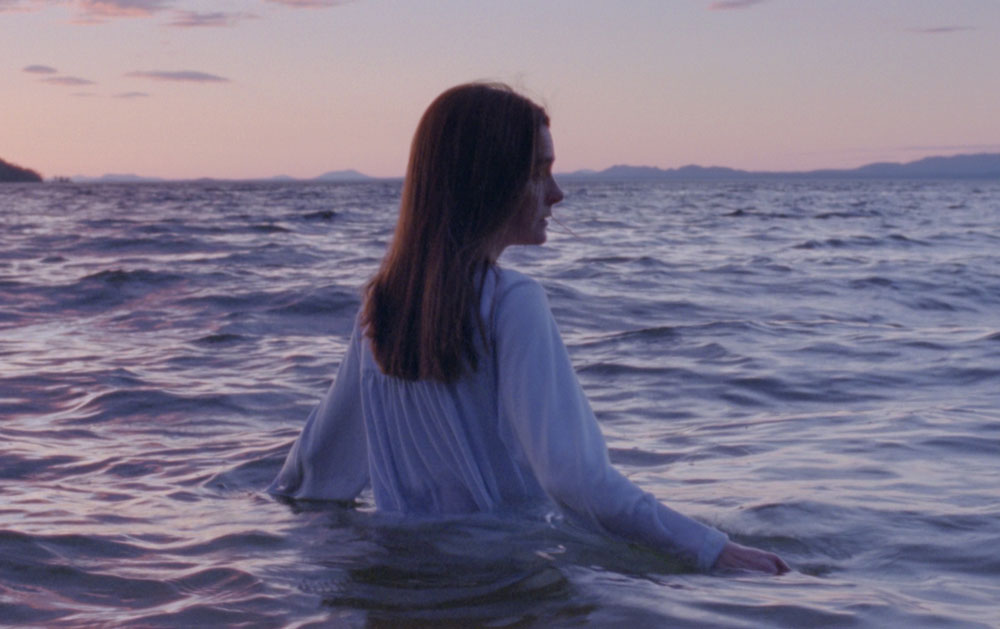When Kathleen Hepburn and her director of photography Norm Li were in the early stages of discussing the look of “Never Steady, Never Still,” the writer/director faced a now-common conundrum when thinking the film would benefit from the photochemical alchemy of celluloid and the sense that something slightly unpredictable would be happening in every frame, even with as much care and consideration as the two would put into composing them.
“[Norm] said, ‘Of course it should be on film, but we could never afford it,’ but then we did the math,” recalls Hepburn, adding with a laugh, “It meant that we didn’t get paid, but it wasn’t impossible. We just thought this might be our last opportunity to do this, so we should just go for it.”
It was just one tough decision of many that Hepburn had to make on her feature that makes “Never Steady, Never Still” the stirring, uncompromising drama that it is, featuring a bracing turn from Shirley Henderson as Judy, a woman grappling with Parkinson’s who is thrust into greater disarray when her husband dies suddenly and her son Jamie (Théodore Pellerin), off working in the oil fields to perhaps find his sense of purpose, isn’t in a position geographically or emotionally to offer much help. Unfolding over the course of a year, a natural thaw sets in as the seasons change following the particularly chilly winter in British Columbia in which the family’s patriarch passes away, but it never feels as if life gets any easier for either Judy or Jamie, who add grief to the burden they already carry – in Jamie’s case, of trying to define himself and in Judy’s, transcending how her condition has defined her.
Well aware of the sheer power of Henderson and Pellerin’s performances, there’s a gentility and patience to how Hepburn approaches “Never Steady, Never Still,” gradually giving audiences a strong sense of place as her actors reveal the fragile psychological state they’re in, coalescing into an emotionally harrowing experience that’s difficult to forget. After premiering last fall at the Toronto Film Festival, the film enjoyed a celebrated run in its native Canada before arriving on American shores and as “Never Steady, Never Still” hits U.S. theaters, Hepburn spoke of the personal inspiration for the film, how she found such an impressive cast and the lessons that came from her feature debut, one far more accomplished than that distinction would suggest.
The film came about just me being curious about my mother’s experience of Parkinson’s and the effect it had on me over time, growing up with it. That was really the first spark of inspiration and I had this first image from a story an aunt had told me about a woman who was living in this very remote community close to where we shot. This was back in the ‘50s when there were no roads to where she was living, and she was on the other side of the lake and her husband had a heart attack in the middle of winter and actually died. She had no way to get him back to town – to the hospital or to the morgue or anything, so she had to put him on a sled and actually had to drag him six miles across the lake to get him to town. There was just something striking about that image to me that represents this strength that women have in extreme situations and it’s very different from what the film is now, but I think that kernel of strength carried on through the development of the script.
How did Shirley Henderson come to mind to play Judy?
I’d seen her in many films before this, but she sparked our attention [with] her performance in “Southcliffe,” the Netflix series. It was just so compelling. What strikes me about her is the combination between how fragile she looks and [how] strong and feisty she actually is. It’s difficult to find that combination in actors of that age range because I think a lot of these women had to be such powerful women to get through their careers to this point, but she’s managed to power through with her search for truth and I think it shows. She’s just such a complex and interesting actor. I was so excited when she agreed to be in the film.

We had a lot of conversations. She was in Scotland prepping and I was in Vancouver, so it was a lot of just speaking on the phone and sending her material. I would send footage of my mother and [we’d] talk about that, but she really understood the character right from the start, this woman who is struggling to be independent against all these forces that are pressing down on her. She approached it from a very instinctual level, working with a lot of repetition, a lot of body work. It’s difficult to say because I wasn’t there with her, but she always talks about how she has a room upstairs in her house and she would just for hours practice falling over and over, just to get the physical side of it so she didn’t have to think about it at all [during shooting]. It was just living in her body.
I understand that’s actually your mom in Judy’s support group. How did those scenes come about?
Those are based on the support groups that my mom goes to, or went to – she passed away recently, and [with Parkinson’s] your voice gets quite weak over time, so she would go to these groups where you would practice vocal exercises. There’s also groups that do dancing just to get your body moving, so those [scenes] were almost word for word things that I’d heard in groups that she’d been to.
How did you find Théodore Pellerin to play her son Jamie?
He was quite wonderful. We didn’t know him before we started casting, but and he was recommended by a casting director and we just knew right away when he walked into the room that he was special. He was very charming and had this angelic presence about him, and what changed about the character when we brought in Théodore was that [Jamie] was originally going to be a much tougher kid, someone that was better at being a little bit more masculine. And Théodore was he was the opposite of what I had originally envisioned. Suddenly, that [character] made more sense because he didn’t fit in this place where he grew up and the character became much more isolated because of it.

It was challenging to get people to commit to that, first of all because for example, Shirley couldn’t take another role in between or she felt like she couldn’t because it would bring her out of the physicality of it and she would have to start again in preparing for the next season, and it was also a challenge retaining crew and making sure the locations still worked in both those seasons, so I would think twice before doing it again. But it was worthwhile because it’s so dramatic up there, that difference between winter and spring and summer, and it’s quite an emotional shift.
The winter was logistically very challenging for a number of reasons. We were shooting in a very remote location for the house interiors and just getting there and back was a little bit dangerous, going down logging roads at night with ice on the road. There was one day where we were shooting a scene at night where Théodore was driving the truck, and we had a bit of an accident in the truck – it wasn’t dangerous, no one was hurt, but I think it really shook him because he was driving. He felt he messed it up and we changed the scene, but what turned that whole experience around for him was this was his first English-language film that he’s ever done and up until that point, he hadn’t really experienced emotion while speaking English. So the fact that he had to have this experience while also doing a scene in English, he said, suddenly he understood the language in a new way — an emotional way. That was a really interesting shift for him.

It’s much closer than anything I’ve done before in terms of what I wanted to achieve – the film itself and the tone of the film. I credit a lot of that to the cinematographer, who was so wonderful and really helped me through what we set out for ourselves before we began shooting. Also just the talent of all the other creatives on the team – my composer, my editor, we had something really special and everyone was so committed to the project. I feel like we put everything we had into it, which is something I’m really proud of. But the process of making a feature was 10 times harder than I ever imagined, just emotionally going through financing and marketing and managing crews. And it’s been quite challenging [to put it out into the world], to be honest. It’s both really rewarding when people connect to it and feel moved by it. That’s a really wonderful experience, but when it is so personal, when people don’t connect with it, it’s much harder to swallow. So the first few festivals, [it was] hard to be out there in the public eye and have people making assumptions or critiquing the work. It shakes you a little bit, but then you get the good reviews and the people who love it and I think now I understand how to find that balance. But as a first-timer, it’s a little bit intimidating.
“Never Steady, Never Still” opens on June 22nd in New York at the AMC Empire 25.





